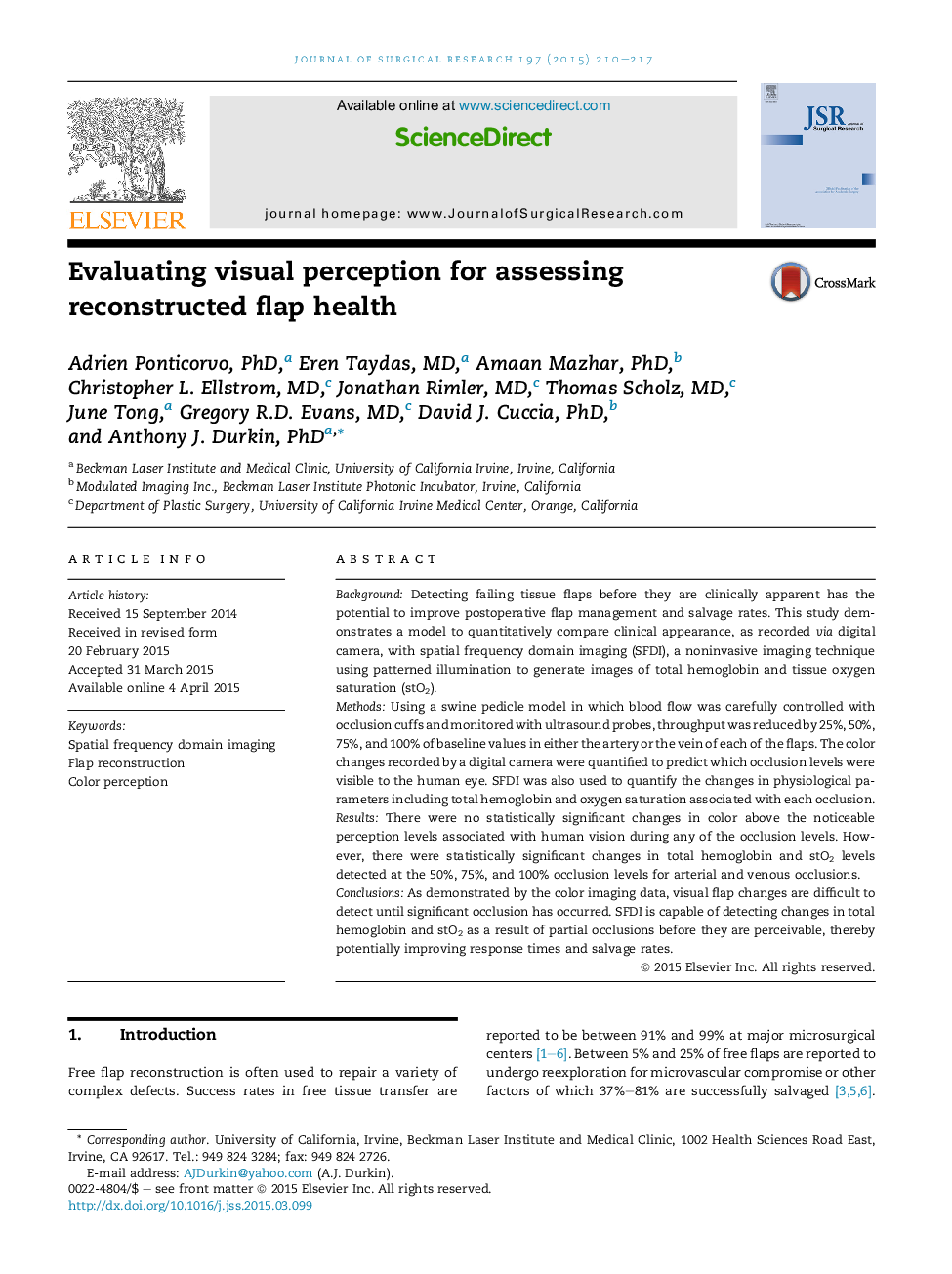| Article ID | Journal | Published Year | Pages | File Type |
|---|---|---|---|---|
| 4299813 | Journal of Surgical Research | 2015 | 8 Pages |
BackgroundDetecting failing tissue flaps before they are clinically apparent has the potential to improve postoperative flap management and salvage rates. This study demonstrates a model to quantitatively compare clinical appearance, as recorded via digital camera, with spatial frequency domain imaging (SFDI), a noninvasive imaging technique using patterned illumination to generate images of total hemoglobin and tissue oxygen saturation (stO2).MethodsUsing a swine pedicle model in which blood flow was carefully controlled with occlusion cuffs and monitored with ultrasound probes, throughput was reduced by 25%, 50%, 75%, and 100% of baseline values in either the artery or the vein of each of the flaps. The color changes recorded by a digital camera were quantified to predict which occlusion levels were visible to the human eye. SFDI was also used to quantify the changes in physiological parameters including total hemoglobin and oxygen saturation associated with each occlusion.ResultsThere were no statistically significant changes in color above the noticeable perception levels associated with human vision during any of the occlusion levels. However, there were statistically significant changes in total hemoglobin and stO2 levels detected at the 50%, 75%, and 100% occlusion levels for arterial and venous occlusions.ConclusionsAs demonstrated by the color imaging data, visual flap changes are difficult to detect until significant occlusion has occurred. SFDI is capable of detecting changes in total hemoglobin and stO2 as a result of partial occlusions before they are perceivable, thereby potentially improving response times and salvage rates.
